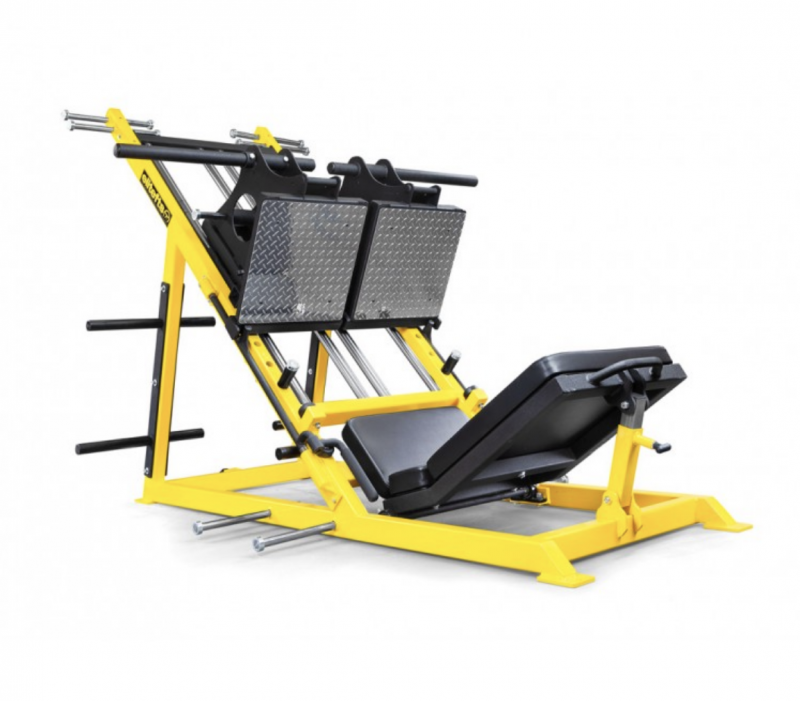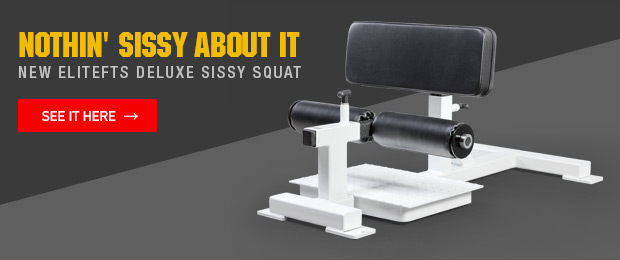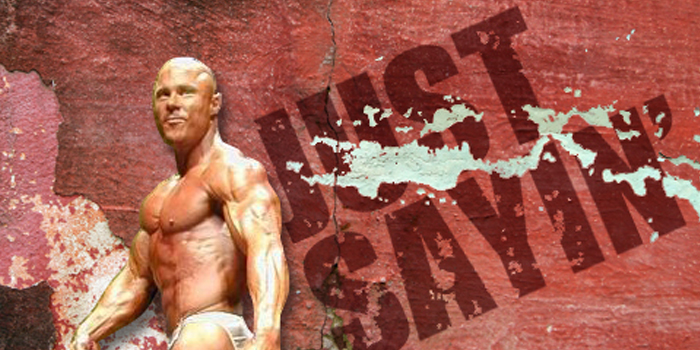
Those who have worked with me and those who know my training philosophies understand that I don’t believe training for hypertrophy is terribly complicated. I also don’t believe that there have been huge advancements in training methodology over the years that has made training more effective or optimal. I consider the concept quite simple and that, at its core, training simply needs to provide a stimulus that hasn’t been seen before to force the muscle to adapt.
The above being stated, I do feel that there have been significant advancements in innovation when it comes to training equipment that has made (or helped to make) training more efficient, more productive, and more “targeted.” Simply put, we have machines today that we didn’t have access to years ago that, at least in theory, should allow for greater muscle stimulation and also the ability to still continue to target a specific muscle group without bringing vulnerabilities or “weak links” into play. Though there are many new machines — targeting numerous angles for all muscle groups — I strongly believe that the biggest benefit from these modern machines impacts leg development the most.
RECENT: 11 Things You Shouldn't Do On Stage (Unless You're Huge)
Back in my day (I’ll take “things old people say for $1,000, Alex”), leg training was pretty limited. We were pretty much stuck with what I consider the basics:
- Squats (front squats, sissy squats, smith machine squats)
- Hack Squats
- Angled Leg Presses
- Vertical Leg Presses
- Lying Hamstring Curls
- Leg Extensions
- Lunges
- Standing and Seated Calf Raises
- Donkey Calf Raises (because your training partner’s balls on your back was apparently anabolic)
If you had any lower back issues from injuries, there were very few of the above exercises you could do with any confidence. If you happened to see a great physique on an older guy, you could almost guarantee that his legs were going to be less developed as he aged because knees and lower back don’t hold up well over years of pounding heavy weight using these very basic exercises.
Fast forward to today.
We live in a time now where we are almost spoiled with modern equipment that provides numerous options — not only for different angles — but to help work around preexisting injuries, especially when it comes to lower back injuries. Many others and I would have had to watch leg development deteriorate over the years due to chronic back issues. Advances in leg equipment have allowed many others and me to continue pounding out intense leg workouts while not continuing to put our lower backs in as much of a vulnerable position.
Because of this, I have come up with my top-5 leg machines that didn’t exist until roughly 10 years ago (at least from the standpoint of being available in most well-equipped gyms). These pieces can be found in most gyms in major cities and are huge assets for the aging bodybuilder.
1. Pit Shark
I list this piece as Number 1 on the list because I feel it is absolutely the best option for continuing to squat without having to risk compromising the lower back.
Because the weight is distributed across the hips, there is significantly less weight that has to be stabilized by the lower back. Yes, this does lend itself to not feeding the posterior chain as much as a regular squat, but I am not saying this exercise is superior to regular squats as much as I am saying this piece allows for those who otherwise cannot squat to continue to squat in some fashion to reap most of the benefits.
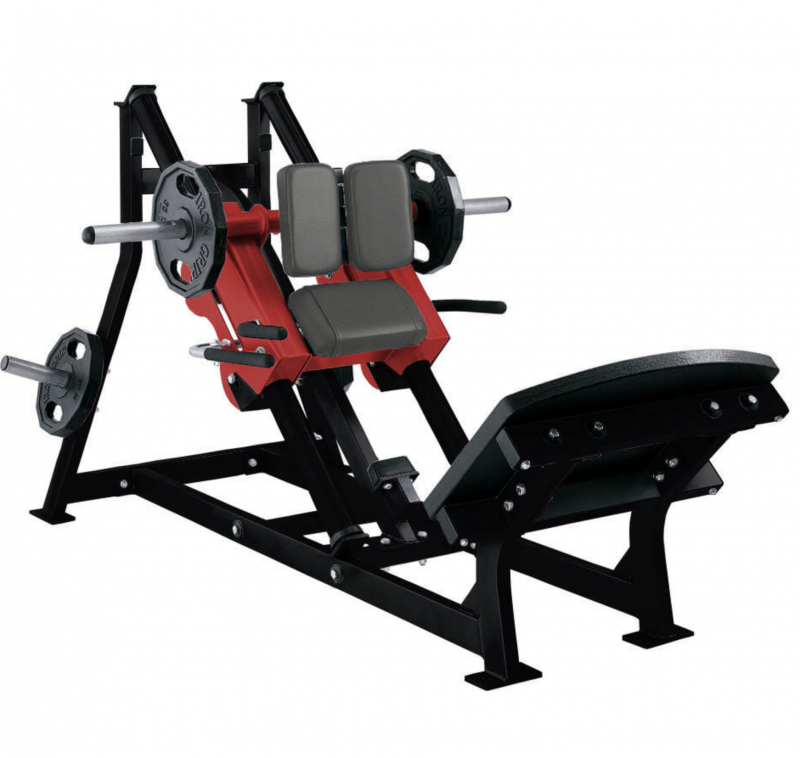
2. High-Angled Hack Squat
Honestly, I am unsure if this is the best label for this piece of equipment. I refer to it as a high-angled hack squat simply because I don’t know the name that everyone else uses for this piece. So, I made up this name years ago.
LISTEN: Table Talk Podcast Clip — Dan Green On Using Intensity to Build Muscle
There is still lower back involvement with this exercise, but it is significantly reduced in relation to regular squatting, and the lower back is not put into as much of a risky position as doing a regular angled leg press. Some of these pieces, because they change slightly from manufacturer to manufacturer, will have different angles for the back pad. It is important that if you do have lower back issues, that you use a back pad that has more of an “open” angle. By this, I mean an angle that is roughly 120 degrees or at least larger than 90 degrees (the same holds true for any angled leg press back pad as well).
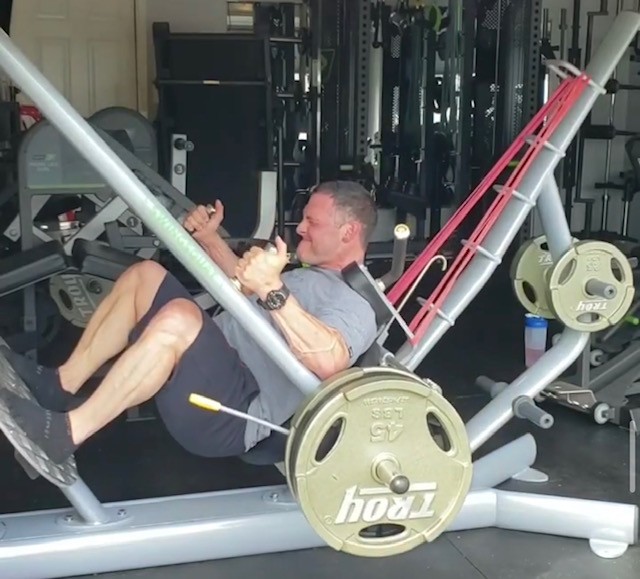
Photo credit: @allencress_ifbbpro
3. Pendulum Squat
A true pendulum squat will have more of a “swing arm” versus some pendulum squats that look more like a fancy squat machine that is plate-loaded. This piece significantly decreases the pressure on the lower back as well and allows for a very large degree of flexibility when it comes to foot position.
4. Tru Squat
Though this piece is available in some gyms these days, they can still be hard to find. I am breaking my rule, here, because this piece is actually not new. However, it was so far ahead of its time and they are so hard to find, that I am including it in my list because savvy gym owners are trying hard to find this piece and get it in their gym.
Armbrust Pro Gym has one in Denver, Colorado, and even though I train in both Fort Lauderdale (where I live now) and in gyms in Miami, I have yet to find a Tru Squat here in South Florida. I consider this piece almost as good as the Pit Shark.
5. Iso-Lateral Leg Press Machine
Back in the day, about the only way you were going to be able to train one leg at a time during a compound movement was to do lunges. With the option of using an iso-lateral leg press, you will very quickly understand how much your strength can differ from one leg to the other. Any time you have an imbalance of strength from the left side of the body to the right, you run the risk of injury. When that imbalance is below the waist, it is that much more important because it can put even a healthy back in a vulnerable position. The only complaint I have about some iso-lateral leg press machines is that the separate platforms can sometimes become wobbly during both the concentric and eccentric movements. Quality, well-built iso-lateral machines like the one elitefts makes, do not wobble.
Whether you have existing injuries you are working hard to train around or not, the advances in training equipment over the last 20 years offer numerous options that weren’t available in years past. Even if you don’t care about different angles or have injuries to work around, the variety alone should help to keep you psychologically fresh. I don’t care much about variety; I’m just falling apart from being old as shit. Just Sayin’.










